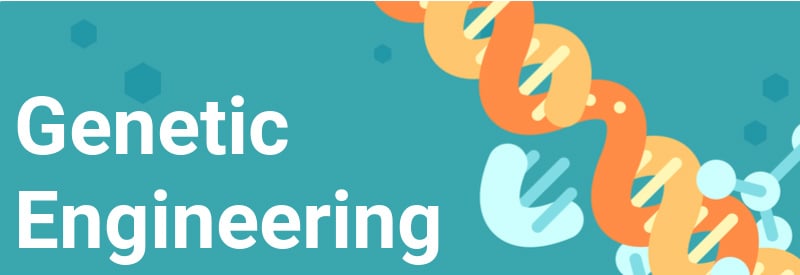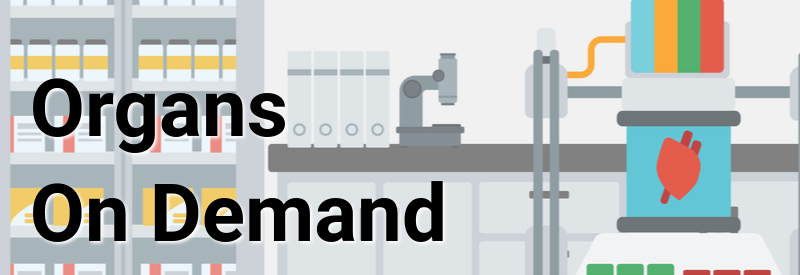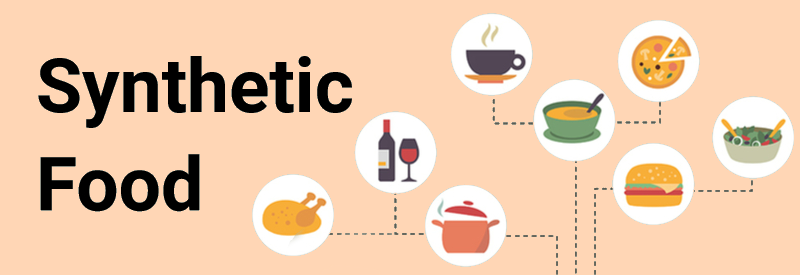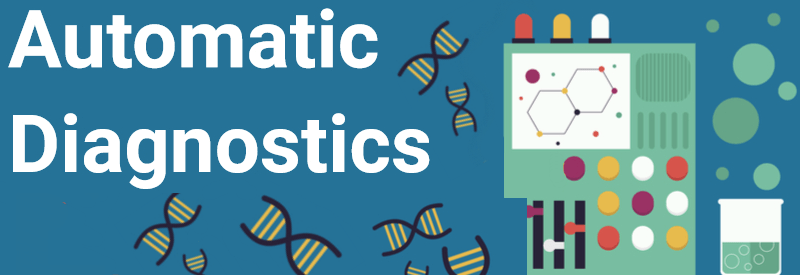From genetic engineering to synthetic food and immortality, biotech is getting surprisingly close to recreating science fiction in real life.
Science fiction is always a step ahead of real-life science. The genre imagined space travel, wireless communication and virtual reality years before they became a reality. In fact, sci-fi has coined some scientific terms that are now widely used such as robot, spacesuit, or astronaut.
Biotechnology is now moving so fast that a lot of the science that not so long ago was just fiction is now part of our daily lives.
From sci-fi novels to video games and big movie franchises like Star Wars, Jurassic Park and Star Trek, genetic engineering is a recurring topic in science fiction stories. Although we are not yet at the point where we can bring back dinosaurs and mammoths — not for lack of trying — we are now able to read, write and edit DNA faster and more precisely than ever.
Genetic engineering is being used to improve the yield of all sorts of crops. It has been used to make plants more nutritious or produce medicines, such as transgenic rice that produces drugs to prevent HIV infections.
In animals, genetic engineering has become a common practice for research. Labs around the world routinely modify the DNA of worms, fruit flies, zebrafish, mice, and many others to replicate and study human diseases. Genetically modified mosquitoes are being used to prevent the spread of malaria and Zika, by introducing a gene into disease-carrying mosquito species that makes their offspring die.
The ultimate feat of engineering human genes is now here, with the gene editing tool CRISPR-Cas9 starting to be tested in clinical trials, with blood disorders and cancer at the top of a long list of diseases that could be treated with it. As the technology develops, controversy about its ethical implications inevitably ensues, especially with cases such as the two ‘CRISPR babies’ that were born in China last year.
The lack of organs to meet the huge demand for transplantation has inspired many sci-fi dystopias, from Never Let Me Go, where clones are bred to provide new organs, to Repo Men, where artificial organs are claimed back if not paid in time.
Artificial organ replacements are already here. The advent of 3D printing has allowed scientists to print simple organs — in 2013, the first child was saved from lung collapse by a 3D-printed trachea. Artificial ears, bladders, blood vessels and vaginas have been successfully transplanted using this technology. A fully artificial heart is no longer fiction, with devices that can even respond to the patient’s physical activity being successfully tested in clinical trials.
Researchers are now looking into making fully biological organs. By including human cells in the bio-ink used in 3D printers, scientists are already bioprinting human skin, and bigger organs are just around the corner. Using genetic engineering, scientists have also been able to create pigs with organs that can be tailor-made to be genetically identical to the person that needs a transplant.
Since Gulliver’s Travels in the early days of science fiction to recent popular series like Altered Carbon, sci-fi seems obsessed with immortality and its consequences for humanity. Though immortality is definitely not here yet, Silicon Valley billionaires just see it as a problem that can be solved within their lifetime. Big names in the Valley, like Peter Thiel and Sergey Brin, are known to have invested in companies working on life extension technologies using genetic engineering and stem cell transplants.
In addition to helping us live longer, biotechnology is also working on keeping us healthy when we reach age 120, especially our brains. As the world population ages, neurodegenerative diseases are on the rise. Where traditional medicine hasn’t been that successful, new technologies like immunotherapy and gene therapy might finally deliver the first treatments that can stop the degeneration of neurons. And for those worrying about their looks a hundred years from now, anti-aging cosmetics based on bacteria are also underway.
Science fiction has long dreamed of food that is made from scratch in a machine by just pushing a button, or even by reading your mind as in The Hitchhiker’s Guide to the Galaxy.
This is clearly impossible when you depend on having a cow to make a steak, but soon, animals may no longer be part of the equation in the production of meat. Lab-grown meat — real meat grown from cells rather than the full animal — is right around the corner, with the first burgers, sausages and steaks expected as soon as 2021.
Around the world, multiple companies working on growing the meat of cows, chicken, turkey, tuna, salmon and many more, as well as making milk without the cow. This shift is expected to significantly improve the environmental impact of the food industry, and a future where your next meal is grown directly at your local store and customized to your specific diet needs might not be so far away.
The movie Gattaca presents a future where the genome of a person is sequenced at birth to determine their likelihood to suffer all sorts of health conditions. This technology could be here sooner than one might think — although hopefully without the ensuing dystopia from the movie.
Artificial intelligence is already being used to study and diagnose a wide range of genetic diseases by reading a person’s genome. The technology is showing high promise in complex diseases such as cancer or Alzheimer’s. Hundreds of hospitals around the world are contributing to create large databases that will help doctors make better diagnostics and give personalized treatments to each patient.
It might take a while to fully unravel accurate predictions of the most complex conditions and physical attributes. However, the number of genomes sequenced is growing exponentially with countries such as the UK, Ireland, and Finland all running programs to sequence the DNA of their populations.
Genetic tests that can be done at home to uncover genetic traits and ancestry lines are also becoming increasingly popular. The company 23andme, whose genetic tests were on Amazon’s top 5 best-sellers on Black Friday, has filed a patent for a method to select sperm and egg donors based on the probability the baby would have for multiple traits, from low risk of colorectal cancer, to high probability of green eyes.
Science fiction often portrays dystopias exploring the negative consequences that new technologies can have. Although sometimes the genre can make science and technology look scarier than it would ever be in real life, it can be a great way of reflecting on the ethical issues that technology might bring along.
Being informed and debating the pros and cons of each new technology will be essential. For example, discussions about the pricing of gene and cell therapies are currently contributing to pressure companies and regulators into rethinking their massive bills. Hopefully, our engagement with science will keep us far away from the dystopian futures of sci-fi novels and films.
This article was originally published on January 2018 and has since been updated. Images via Shutterstock










